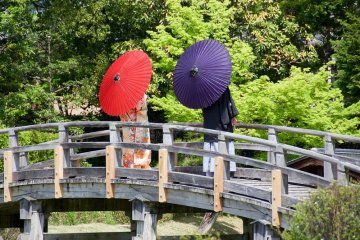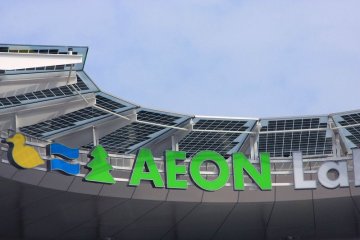Overview
Saitama Prefecture’s cities are often regarded as merely bedroom communities for workers heading to Tokyo. Over 900,000 people commute from suburban Saitama to the capital. For perspective, imagine Birmingham, England moving en masse daily. However, there is a lot to see and do in these suburbs, so I suggest going in the opposite direction. One destination largely undiscovered by tourists yet rich with modern and traditional culture is Koshigaya City.
Shrines and Temples
Edo Period Koshigaya-shuku was a post town on the Nikko Kaido and Oshu Kaido thoroughfares. For a while after the cataclysmic 1657 Meireki Fire, the shogun ruled from here. Today, there are historic shrines and temples remaining from that era dotting the banks of the winding Motoara River.
Central Hisaizu Shrine houses the city’s Shinto guardian deity. This shrine, with a history that goes back to the Heian Period, was a resting spot for the shoguns. In the garden in front of the shrine are wisteria trellises designated as a prefectural natural monument.
Nearby Tengakuji, another favorite of the shoguns, is a Jodo sect temple dating from the 15th century. The shrine halls, garden, and belfry are nestled in green surroundings. Goshuin stamps are available here.
Historic Houses
On the west side of Laketown is Koshigaya City’s oldest surviving house. The Former Nakamura Residence, dating from the 17th century, has a restored main house, a classic gate, and storehouses.
Omanocho Former Nakamura Residence near Gamo Station is a Taisho Period manor with kura storehouses full of antiques, farm implements, and antique fire engines. It’s the closest thing you’ll get to Taisho Period time travel.
Gardens
Hanata-en, a modern Japanese strolling garden, is designed in a traditional style. The wooden bridges over ponds stocked with koi, the tea house, and the Noh drama theater are a must-see on a visit to the city. If you’re lucky, you might catch newlyweds in kimono posing for photographs.
Koshigaya’s sister city, Campbelltown, Australia, shares its avian life and flora with Koshigaya city at Campbelltown Forest of Wild Birds. For homesick Australians and bird watchers from everywhere, this 3000 square meter aviary is a place to meet parrots, kookaburras, and tawny frogmouths. Visitors can view birds flying freely from platforms surrounded by gum trees, and kids are delighted by wallabies and emus.
Shopping and Dining

Massive Koshigaya Laketown mall, the largest in Japan, put Koshigaya City on the map. Over 500 shops representing Japanese and international brands are housed in two main buildings, Kaze and Mori, each with three floors. Bordering the lake which gives the mall its name is yet another two-story outlet mall. Shoppers can spend the whole day here. Each of the two buildings’ food courts offers affordable dining. Aeon Laketown’s website has multilingual guides.
Around Shin-Koshigaya and Minami-Koshigaya Stations are many izakaya and dining bars. On the north side of the Musashino Line is Minami Koshigaya Golden Gai, a short but densely packed street of izakayas. On the other side of the station, satisfy your sweet tooth or pick up onigiri rice balls at Dango Kazoku.








